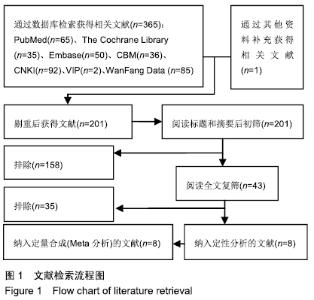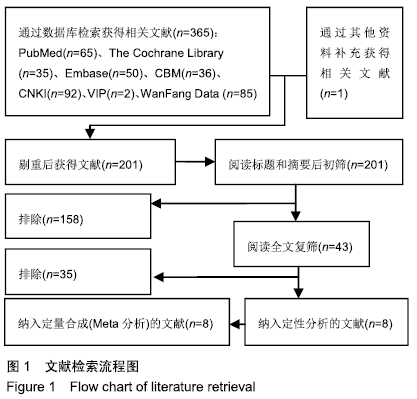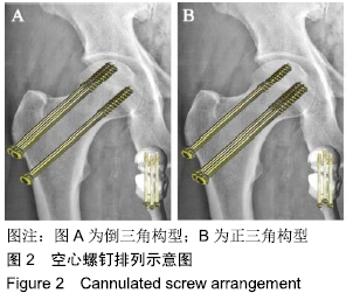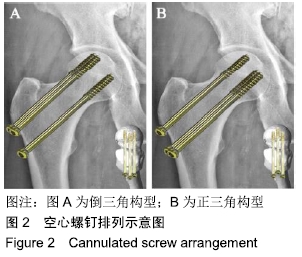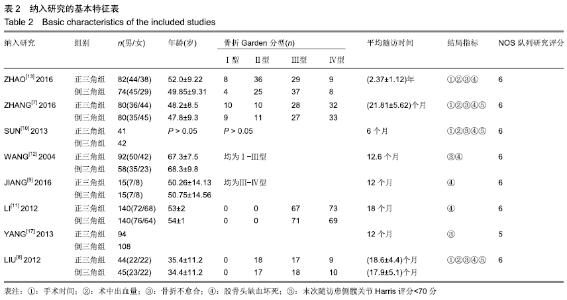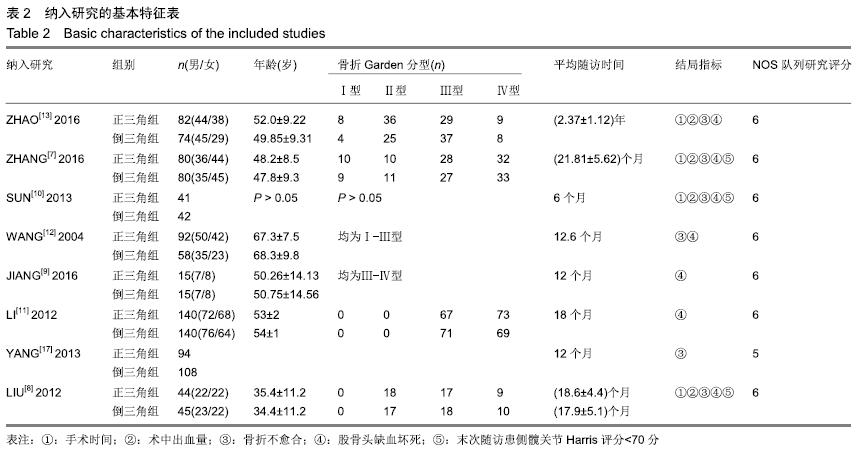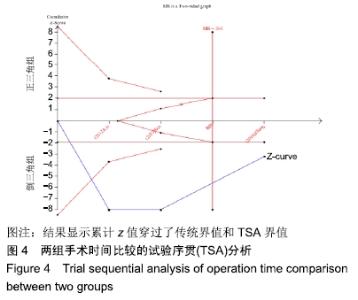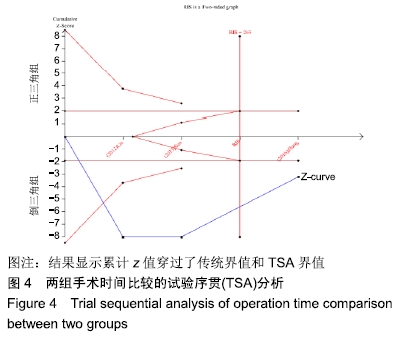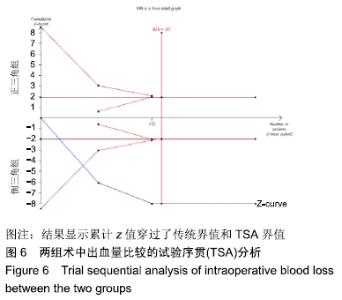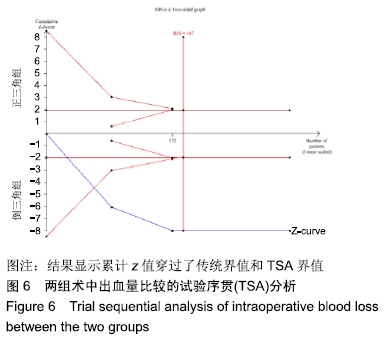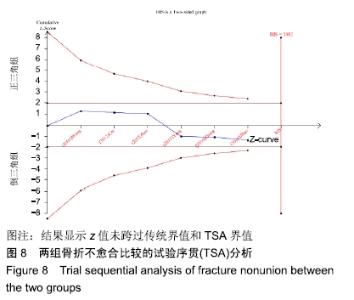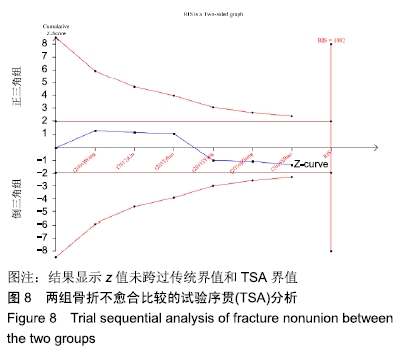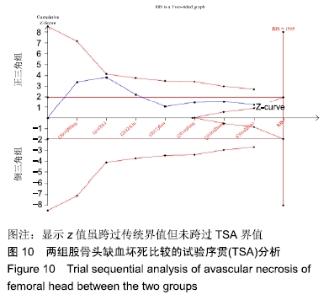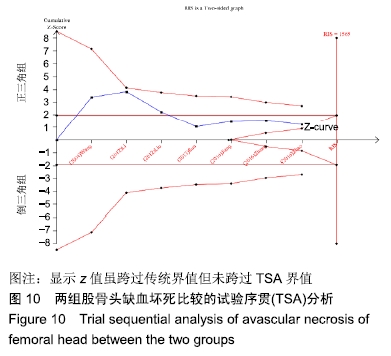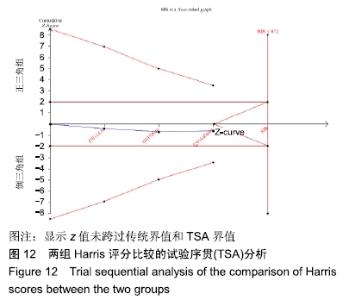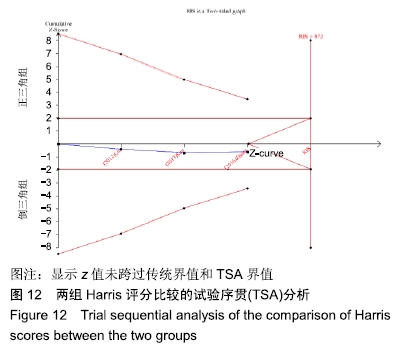Chinese Journal of Tissue Engineering Research ›› 2020, Vol. 24 ›› Issue (6): 924-930.doi: 10.3969/j.issn.2095-4344.2429
Previous Articles Next Articles
Systematic review of triangle versus inverted triangle-configurated cannulated screws in the treatment of femoral neck fractures
Ruan Zhe, Zhu Yong, Lin Zhangyuan, Long Haitao, Zhao Ruibo, Lu Bangbao, Sun Buhua, Cheng Liang, Zeng Min, Zhao Shushan
- Department of Orthopedics, Xiangya Hospital, Central South University, Changsha 410008, Hunan Province, China
-
Received:2019-06-18Revised:2019-06-21Accepted:2019-07-31Online:2020-02-28Published:2020-01-18 -
Contact:Zhao Shushan, MD, Attending physician, Department of Orthopedics, Xiangya Hospital, Central South University, Changsha 410008, Hunan Province, China -
About author:Ruan Zhe, Master candidate, Department of Orthopedics, Xiangya Hospital, Central South University, Changsha 410008, Hunan Province, China Zhu Yong, MD, Chief physician, Department of Orthopedics, Xiangya Hospital, Central South University, Changsha 410008, Hunan Province, China Ruan Zhe and Zhu Yong contributed equally to this paper -
Supported by:the National Natural Science Foundation of China, No. 81874006
CLC Number:
Cite this article
Ruan Zhe, Zhu Yong, Lin Zhangyuan, Long Haitao, Zhao Ruibo, Lu Bangbao, Sun Buhua, Cheng Liang, Zeng Min, Zhao Shushan. Systematic review of triangle versus inverted triangle-configurated cannulated screws in the treatment of femoral neck fractures[J]. Chinese Journal of Tissue Engineering Research, 2020, 24(6): 924-930.
share this article
Add to citation manager EndNote|Reference Manager|ProCite|BibTeX|RefWorks
| [1] JU DG, RAJAEE SS, MIROCHA J, et al. Nationwide Analysis of Femoral Neck Fractures in Elderly Patients: A Receding Tide. J Bone Joint Surg Am.2017;99(22): 1932-1940. [2] RAPP K, BUCHELE G, DREINHOFER K, et al. Epidemiology of hip fractures : Systematic literature review of German data and an overview of the international literature.Z Gerontol Geriatr.2019;52(1):10-16. [3] 中国老年医学学会骨与关节分会创伤骨科学术工作委员会.老年髋部骨折诊疗专家共识(2017)[J].中华创伤骨科杂志, 2017, 19(11): 921-927. [4] ROGMARK C, LEONARDSSON O. Hip arthroplasty for the treatment of displaced fractures of the femoral neck in elderly patients.Bone Joint J. 2016;98-B(3):291-297. [5] 张长青,黄轶刚. 股骨颈骨折的治疗理念与新技术[J].中华创伤骨科杂志, 2016,18(8): 645-646. [6] 张成宝,马信龙,马剑雄,等.股骨颈骨折空间移位程度与内固定术后股骨头缺血性死的相关性研究[J]. 中华创伤骨科杂志, 2016, 18(2):133-137. [7] 仉培武,严少荣,姬钢.不同排列方式空心螺钉治疗股骨颈骨折的疗效分析[J].局解手术学杂志, 2016, 25(11): 844-847,848. [8] 刘鹄,杨睿,沈慧勇,等.空心钉正三角形与倒三角形排列方式治疗股骨颈骨折的疗效比较[J].中华创伤骨科杂志, 2012, 14(8): 726-728. [9] 姜华亮. 中空钉正三角形固定股骨颈骨折对股骨头血运影响的临床研究[J].中国继续医学教育, 2016, 8(21): 70-1,2. [10] 孙亚东. 空心钉正三角形与倒三角形排列方式治疗股骨颈骨折的疗效比较[J].中国伤残医学, 2013, (7): 115-116. [11] 李向民,万新敏,龙飞,等.股骨颈骨折中2种中空钉置钉位置对股骨头血运的影响[J].河北医药,2012,34(3):350-351. [12] 王赤宇,宋文奇,陆男吉,等. 螺纹钉固定位置对股骨颈骨折预后的影响[J].临床骨科杂志, 2004,7(4):368-369. [13] 赵庭波,吉璐宏,唐欢.正三角和倒三角排列治疗中青年股骨颈骨折疗效比较[J].实用骨科杂志, 2016,22(4):372-374,375. [14] 李向民,万新敏,龙飞,等.股骨颈骨折中空钉置钉与股骨头坏死相关性分析[J].中国误诊学杂志,2010,10(34): 8386. [15] 李向民,万新敏,龙飞,等. 中空钉正三角形固定股骨颈骨折对股骨头血运影响的临床观察[J].职业与健康, 2012,28 (2): 253-254. [16] 李向民,万新敏,龙飞,等.股骨颈骨折中空钉置钉方式对股骨头缺血坏死的影响[J].临床误诊误治, 2011,24(10): 27-28. [17] YANG JJ, LIN LC, CHAO KH, et al. Risk factors for nonunion in patients with intracapsular femoral neck fractures treated with three cannulated screws placed in either a triangle or an inverted triangle configuration.J Bone Joint Surg Am.2013;95(1): 61-69. [18] ZHANG H, HU YQ, ZHANG ZL.Age trends for hip geometry in Chinese men and women and the association with femoral neck fracture. Osteoporos Int. 2011;22(9):2513-2522. [19] XIA WB, HE SL, XU L, et al.Rapidly increasing rates of hip fracture in Beijing, China .J Bone Miner Res. 2012;27(1): 125-129. [20] CHENG T, ZHANG G, ZHANG X.Review: Minimally invasive versus conventional dynamic hip screw fixation in elderly patients with intertrochanteric fractures: a systematic review and meta-analysis. Surg Innov. 2011;18(2):99-105. [21] LY TV, SWIONTKOWSKI MF.Treatment of femoral neck fractures in young adults.J Bone Joint Surg Am.2008;90(10): 2254-2266. [22] DENEKA DA, SIMONIAN PT, STANKEWICH CJ, et al. Biomechanical comparison of internal fixation techniques for the treatment of unstable basicervical femoral neck fractures. J Orthop Trauma.1997;11(5):337-343. [23] BLAIR B, KOVAL KJ, KUMMER F, et al. Basicervical fractures of the proximal femur: A biomechanical study of 3 internal fixation techniques.Clin Orthop Relat Res. 1994;(306): 256-263. [24] BHANDARI M, DEVEREAUX PJ, TORNETTA P 3RD, et al. Operative management of displaced femoral neck fractures in elderly patients. An international survey.J Bone Joint Surg Am. 2005;87(9):2122-2130. [25] ZHANG LL, ZHANG Y, MA X, et al.Multiple cannulated screws vs. dynamic hip screws for femoral neck fractures : A meta-analysis.Der Orthopade.2017;46(11): 954-962. [26] 王添兴,李国庆,汪洋,等.空心加压螺钉与动力髋螺钉治疗股骨颈骨折术后股骨头坏死相关并发症的Meta分析[J].医学信息,2019, 32(2): 83-86. [27] PELET S, LEYVRAZ PF, GAROFALO R, et al.Sub- or intertrochanteric fracture following screw fixation of an intracapsular proximal femoral fracture: true complication or technical error? .Swiss Surg. 2003;9(2):82-86. [28] OAKEY JW, STOVER MD, SUMMERS HD, et al. Does screw configuration affect subtrochanteric fracture after femoral neck fixation? .Clin Orthop Relat Res. 2006;443:302-306. [29] 史威,范婕,张英泽,等. 两种构型空心加压螺钉固定头颈型股骨颈骨折的生物力学特征[J].中国组织工程研究与临床康复,2007, 11(25): 5039-5041. [30] 王世坤,王志义,刘振宇.空心钉在股骨颈中构型的生物力学研究[J].实用骨科杂志, 2011,14(11): 998-1001. |
| [1] | Hu Kai, Qiao Xiaohong, Zhang Yonghong, Wang Dong, Qin Sihe. Treatment of displaced intra-articular calcaneal fractures with cannulated screws and plates: a meta-analysis of 15 randomized controlled trials [J]. Chinese Journal of Tissue Engineering Research, 2021, 25(9): 1465-1470. |
| [2] | Huang Dengcheng, Wang Zhike, Cao Xuewei. Comparison of the short-term efficacy of extracorporeal shock wave therapy for middle-aged and elderly knee osteoarthritis: a meta-analysis [J]. Chinese Journal of Tissue Engineering Research, 2021, 25(9): 1471-1476. |
| [3] | Du Xiupeng, Yang Zhaohui. Effect of degree of initial deformity of impacted femoral neck fractures under 65 years of age on femoral neck shortening [J]. Chinese Journal of Tissue Engineering Research, 2021, 25(9): 1410-1416. |
| [4] | Chen Junming, Yue Chen, He Peilin, Zhang Juntao, Sun Moyuan, Liu Youwen. Hip arthroplasty versus proximal femoral nail antirotation for intertrochanteric fractures in older adults: a meta-analysis [J]. Chinese Journal of Tissue Engineering Research, 2021, 25(9): 1452-1457. |
| [5] | Chen Jinping, Li Kui, Chen Qian, Guo Haoran, Zhang Yingbo, Wei Peng. Meta-analysis of the efficacy and safety of tranexamic acid in open spinal surgery [J]. Chinese Journal of Tissue Engineering Research, 2021, 25(9): 1458-1464. |
| [6] | Wang Yongsheng, Wu Yang, Li Yanchun. Effect of acute high-intensity exercise on appetite hormones in adults: a meta-analysis [J]. Chinese Journal of Tissue Engineering Research, 2021, 25(8): 1305-1312. |
| [7] | Zeng Yanhua, Hao Yanlei. In vitro culture and purification of Schwann cells: a systematic review [J]. Chinese Journal of Tissue Engineering Research, 2021, 25(7): 1135-1141. |
| [8] | Kong Desheng, He Jingjing, Feng Baofeng, Guo Ruiyun, Asiamah Ernest Amponsah, Lü Fei, Zhang Shuhan, Zhang Xiaolin, Ma Jun, Cui Huixian. Efficacy of mesenchymal stem cells in the spinal cord injury of large animal models: a meta-analysis [J]. Chinese Journal of Tissue Engineering Research, 2021, 25(7): 1142-1148. |
| [9] | Huang Dengcheng, Wang Zhike, Cao Xuewei. Intravenous, topical tranexamic acid alone or their combination in total knee arthroplasty: a meta-analysis of randomized controlled trials [J]. Chinese Journal of Tissue Engineering Research, 2021, 25(6): 948-956. |
| [10] | Li Yan, Wang Pei, Deng Donghuan, Yan Wei, Li Lei, Jiang Hongjiang. Electroacupuncture for pain control after total knee arthroplasty: a meta-analysis [J]. Chinese Journal of Tissue Engineering Research, 2021, 25(6): 957-963. |
| [11] | He Xiangzhong, Chen Haiyun, Liu Jun, Lü Yang, Pan Jianke, Yang Wenbin, He Jingwen, Huang Junhan. Platelet-rich plasma combined with microfracture versus microfracture in the treatment of knee cartilage lesions: a meta-analysis [J]. Chinese Journal of Tissue Engineering Research, 2021, 25(6): 964-969. |
| [12] | Hua Haotian, Zhao Wenyu, Zhang Lei, Bai Wenbo, Wang Xinwei. Meta-analysis of clinical efficacy and safety of antibiotic artificial bone in the treatment of chronic osteomyelitis [J]. Chinese Journal of Tissue Engineering Research, 2021, 25(6): 970-976. |
| [13] | Zhan Fangbiao, Cheng Jun, Zou Xinsen, Long Jie, Xie Lizhong, Deng Qianrong. Intraoperative intravenous application of tranexamic acid reduces perioperative bleeding in multilevel posterior spinal surgery: a meta-analysis [J]. Chinese Journal of Tissue Engineering Research, 2021, 25(6): 977-984. |
| [14] | Zhong Yuanming, Wan Tong, Zhong Xifeng, Wu Zhuotan, He Bingkun, Wu Sixian. Meta-analysis of the efficacy and safety of percutaneous curved vertebroplasty and unilateral pedicle approach percutaneous vertebroplasty in the treatment of osteoporotic vertebral compression fracture [J]. Chinese Journal of Tissue Engineering Research, 2021, 25(3): 456-462. |
| [15] | Li Yang, Zhang Mingyong. Meta-analysis of the effect of double Endobutton and clavicular hook plate on the treatment of acromioclavicular dislocation [J]. Chinese Journal of Tissue Engineering Research, 2021, 25(3): 463-470. |
| Viewed | ||||||
|
Full text |
|
|||||
|
Abstract |
|
|||||
